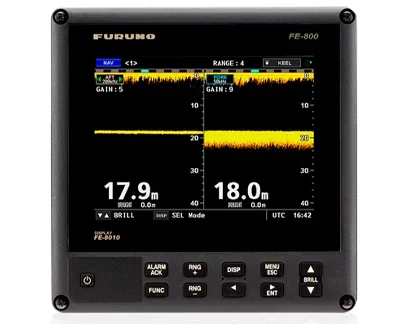Echo Sounder: Precision Beneath the Waves
The echo sounder—often referred to as a depth sounder—is a vital tool found on nearly every modern vessel’s bridge. It’s a sailor’s go-to instrument for knowing exactly how much water lies beneath the keel. Especially critical in tight spots like coastal waters, narrow channels, or when approaching busy ports, this device plays a key role in ensuring safe navigation.
How Does an Echo Sounder Work?
At its core, the echo sounder operates using sonar technology—short for Sound Navigation and Ranging. So fundamentally, there’s a device called a transducer fixed to the bottom of the ship, ordinarily near the keel. It sends a sound pulse straight down into the water. That sound travels until it hits the seabed, then bounces back up to the same device. The framework checks how long that round trip took, and since we already know how fast sound moves through water—roughly 1500 meters per second—it does the math and shows how deep the water is beneath the ship.
Modern echo sounders show this data digitally and graphically, offering continuous and real-time updates. This enables the bridge team to react rapidly in case of shoaling depths or uncharted submerged obstacles.
Components of an Echo Sounder System:
Transducer: Sends and receives the sound pulses
Processor/Display Unit: Converts time into depth and shows readings
Power Supply: Guarantees steady operation, often connected to the ship’s main power
Advantages of Using Echo Sounders:
-Provides persistent depth monitoring
-Enhances safety in shallow and coastal areas
-Aids in anchoring operations
-Assists in survey and dredging operations
-Helps avoid underwater hazards
IMO Regulations and Standards As per SOLAS Chapter V, Regulation 19, all passenger ships and cargo ships of 300 GT and over must be equipped with an echo sounding device. The device must be capable of measuring the depth under the keel continuously and accurately.
Common Alarms in Echo Sounders:
Advanced echo sounders come equipped with a few alarms to caution the crew in real-time if anything irregular is detected:
Shallow Water Alert: This one goes off if the water under the ship suddenly gets too shallow—basically when it drops below a limit you’ve set. It’s there to warn you before things get risky, like scraping the bottom or worse, getting stuck.
Deep Water Alarm: Actuates if the ship all of a sudden enters waters deeper than expected—often valuable in checking safe anchoring zones.
Loss of Signal Alarm: Indicates a disturbance in signal transmission, which may be caused by equipment failure or natural interference.
When Going Astern: Why Turn Off the Echo Sounder? It is a standard practice to switch off the echo sounder when going astern. The reason is that propeller wash and turbulence from the stern gear make aerated water with various air bubbles. These bubbles interfere with the sonar pulses, leading to sporadic readings or signal loss. In a few cases, it may indeed trigger wrong alarms. Briefly switching off the echo sounder amid astern movement dodges confusion and avoids misinterpretation by the bridge team.
Location Onboard : The transducer is ordinarily mounted near the keel, centrally along the ship’s bottom, to guarantee the most precise depth reading. The display unit is installed on the bridge for easy perceivability by the Officer of the Watch (OOW).
Echo Sounder Tips from the Bridge:
-Always confirm that the depth shown is from keel level (not sea level or transducer)
-Set alerts according to the area’s navigational risk
-Regularly check for marine growth on the transducer to dodge signal disruption
-Use in combination with the ECDIS and charts for secure navigation planning
In conclusion, the echo sounder is a quiet gatekeeper underneath the hull—relentlessly scanning the depths, guaranteeing a secure voyage, and giving navigators the certainty to steer through challenging waters. Whether you’re approaching a narrow channel or anchoring in new depths, a well-calibrated echo sounder is your best companion.


